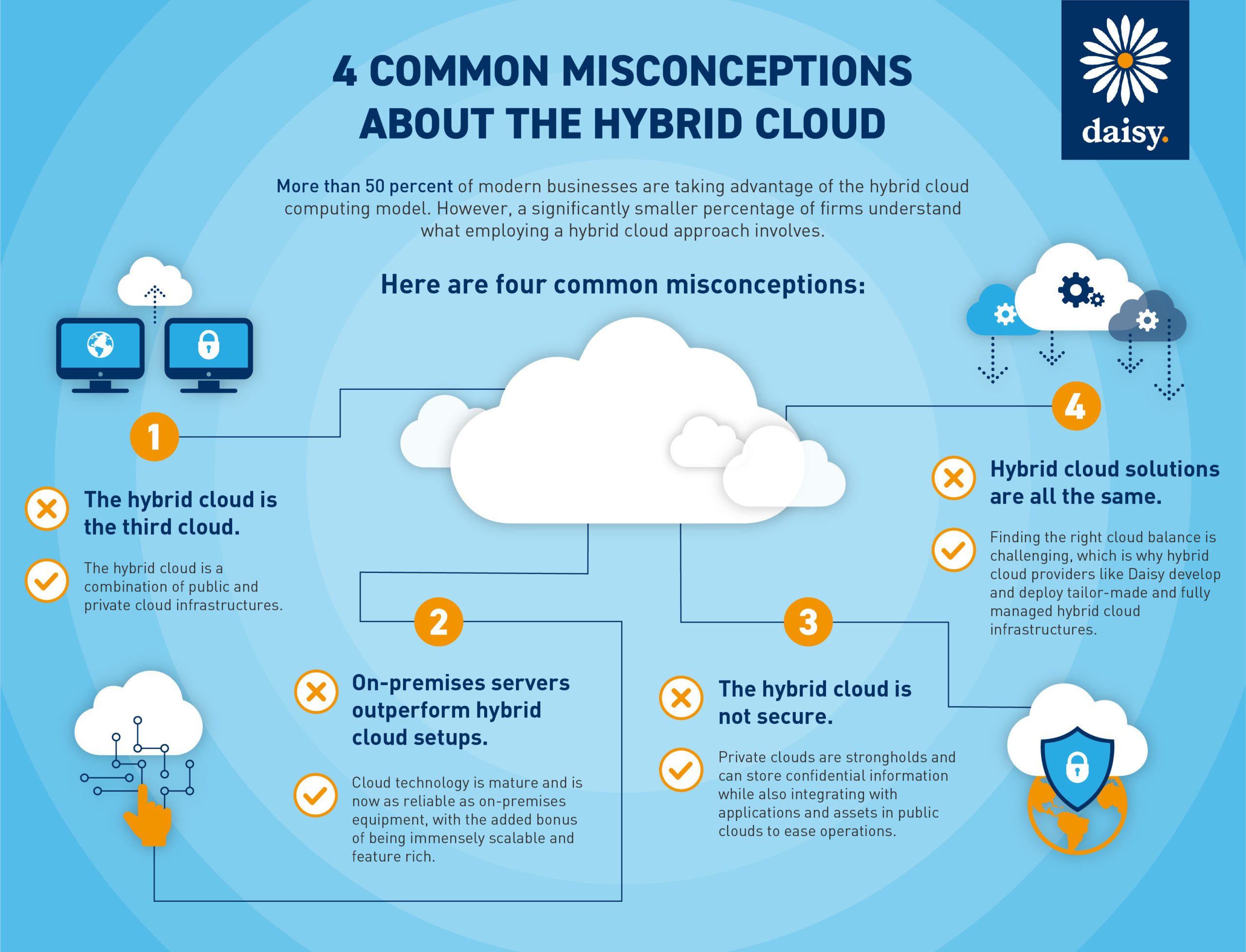
Understanding Hybrid Cloud Computing
Definition of Hybrid Cloud
Hybrid cloud computing refers to a cloud service model that combines on-premises private cloud infrastructure with public cloud services. This merger allows businesses to enjoy the best of both worlds, maintaining sensitive data within their secure private cloud, while leveraging the scalable and cost-efficient resources of public cloud providers. Picture a storefront: the private cloud is the exclusive, well-kept inventory behind the scenes, while the public cloud is the attractive display outside that draws customers in.
In simpler terms, it enables organizations to seamlessly transition workloads between cloud environments based on their specific needs, whether it’s for data processing, application hosting, or resource scalability. This flexible infrastructure not only enhances operational efficiency but also ensures businesses can adapt quickly to changing demands.
Benefits of Hybrid Cloud for Businesses
Adopting a hybrid cloud model presents several compelling benefits for businesses looking to enhance their technological real estate. Here are some key advantages:
- Cost Efficiency: By utilizing public clouds for less-sensitive operations, businesses minimize their IT expenditures while reserving private clouds for critical applications and data.
- Scalability: Hybrid cloud solutions allow companies to ramp up or scale down operations according to demand. For instance, during peak business seasons, additional resources can be temporarily drawn from the public cloud.
- Flexibility and Control: Organizations can tailor their cloud strategy—deciding where data and applications reside based on regulatory requirements or business priorities.
- Improved Disaster Recovery: Hybrid clouds enhance disaster recovery capabilities by allowing data to be backed up in multiple locations, thus ensuring business continuity.
- Enhanced Security: Sensitive data can be stored securely in the private cloud, while less critical data is processed on the public side, offering a balanced yet secure solution.
Consider a financial institution managing clients’ confidential information. The hybrid cloud enables them to keep sensitive data protected while utilizing the public cloud for scalable, less-sensitive tasks, ensuring compliance and security without sacrificing performance.
In essence, hybrid cloud computing equips businesses with a versatile, resilient, and efficient platform tailored to today’s fast-paced digital landscape. Organizations looking to embrace future technologies would find this model particularly advantageous, making it a topic worth exploring further on the TECHFACK blog.

Implementing Hybrid Cloud Solutions
Integration of Public and Private Clouds
Successfully implementing hybrid cloud solutions hinges on the effective integration of public and private cloud environments. This process enables organizations to harmonize their IT infrastructures, ensuring that data and applications can be easily transferred and managed across both realms.
To illustrate, think about a retail company gearing up for the holiday season. They might use a private cloud to store sensitive customer information and manage transactions securely, while leveraging a public cloud for running applications that analyze buying trends in real time. This dual approach not only keeps data safe but also enhances performance and scalability.
Key integration strategies include:
- APIs (Application Programming Interfaces): They serve as bridges that enable your private and public cloud to communicate effectively. By using standard APIs, organizations can automate processes and facilitate smooth data transfer.
- Hybrid Cloud Management Tools: These tools provide centralized management, allowing businesses to monitor and optimize resource usage across their two environments. Companies like VMware and Microsoft Azure offer robust solutions for hybrid cloud management.
- Data Migration Strategies: Proper planning around moving data between environments is crucial. Utilizing services like hybrid backup solutions can ensure seamless data flow while adhering to compliance standards.
Considerations for Hybrid Cloud Deployment
While the benefits of hybrid cloud are enticing, there are critical considerations to address before deployment. These factors ensure a successful transition and ongoing operation.
- Compliance and Regulatory Needs: Assess which regulations affect your industry to avoid hefty penalties. For example, financial companies must adhere to strict data protection laws, so understanding where data resides becomes vital.
- Security Protocols: As businesses navigate between public and private clouds, it is essential to establish robust security measures that cover both environments. Implement encryption and access controls to protect sensitive data.
- Cost Management: While hybrid cloud can be cost-effective, organizations must strategize their spending. Developing a budget that covers both public and private resources can prevent unexpected costs.
- Vendor Reliability: Choosing the right cloud provider can significantly impact your hybrid cloud strategy. Researching vendors’ reputations and capabilities can lead to stronger, more reliable partnerships.
By keeping these considerations top-of-mind, organizations can effectively implement hybrid cloud solutions that foster operational efficiency, flexibility, and resilience—insights well worth the read on the TECHFACK blog as businesses navigate their cloud journeys.

Security in Hybrid Cloud Environments
Data Protection in Hybrid Cloud
As businesses increasingly adopt hybrid cloud solutions, ensuring robust data protection becomes paramount. The dual nature of these environments—housing sensitive data in private clouds while leveraging public clouds for scalability—demands a strategic approach to security.
Consider a healthcare provider that holds patient records in a private cloud for compliance reasons but uses a public cloud to analyze health trends. To maintain data protection, they must implement comprehensive security measures that cover both environments. Here are some key strategies for effective data protection in a hybrid cloud:
- Encryption: Ensure that all data, whether at rest or in transit, is encrypted. This adds a crucial layer of security, safeguarding sensitive information from unauthorized access.
- Access Controls: Implement stringent user access policies. Role-based access control (RBAC) ensures that only authorized personnel can access specific data, minimizing the risk of breaches.
- Regular Backups: Establish automatic backup solutions to maintain data integrity. If any data loss occurs, it can be promptly restored from reliable backup sources.
- Monitoring and Auditing: Continuous monitoring and regular audits help identify potential vulnerabilities and ensure compliance with security policies.
By incorporating these practices, businesses can significantly enhance their data protection strategies within hybrid cloud environments.
Compliance and Governance in Hybrid Cloud
Navigating compliance and governance in a hybrid cloud landscape requires a comprehensive understanding of industry regulations and data governance best practices. This is particularly crucial for industries like finance and healthcare, where legal compliance is non-negotiable.
A personal anecdote illustrates this well: A financial firm faced serious repercussions for non-compliance due to unclear data residency policies across its hybrid cloud setup. This incident highlighted the importance of crafting a thorough compliance strategy tailored to hybrid implementations.
Key considerations for ensuring compliance and governance include:
- Regulatory Frameworks: Familiarize yourself with regulations such as GDPR, HIPAA, or PCI-DSS that pertain to your industry. Each has specific requirements for data handling, which must be rigorously followed.
- Data Mapping: Conduct a thorough inventory of where data resides within your hybrid cloud. Understanding the flow and storage locations of sensitive data enables better compliance.
- Policy Creation: Develop clear governance policies that outline data usage, retention, and deletion protocols across both cloud environments.
- Training Employees: Conduct regular training sessions for employees on compliance standards and best practices, fostering a culture of accountability.
In summary, security in hybrid cloud environments demands an intentional focus on data protection and compliance. By prioritizing these elements, organizations can ensure their hybrid cloud journeys are both successful and aligned with regulatory mandates—an insightful topic discussed extensively on the TECHFACK blog.

Managing Hybrid Cloud Infrastructures
Monitoring and Optimization
Managing a hybrid cloud environment effectively requires continuous monitoring and optimization to ensure that resources are being utilized efficiently. Just like a gardener watches over a garden to encourage healthy growth, IT teams must keep an eye on their hybrid cloud systems to identify any issues and optimize performance.
For example, a manufacturing company recently adopted a hybrid cloud system to streamline their production processes. They quickly realized that without proper monitoring tools, they couldn’t accurately assess their resource allocation across environments. Here are some key strategies for effective monitoring and optimization:
- Use of Monitoring Tools: Deploy comprehensive monitoring solutions like Datadog, New Relic, or Microsoft Azure Monitor. These tools provide real-time insights into performance metrics and resource usage, alerting teams to potential issues before they escalate.
- Performance Analytics: Regularly analyze performance data to identify trends and optimize workloads. For instance, some applications may run more efficiently on private clouds, while others benefit from the scalability of public resources.
- Resource Allocation: Continuously assess and adjust resource allocation based on current demand. Implement auto-scaling features, which automatically increase or decrease resources based on real-time usage patterns, further enhancing operational efficiency.
- Cost Management: Keep track of cloud expenditures using tools that provide budget alerts and cost tracking. This enables organizations to manage budgets effectively while optimizing resource usage.
Scalability and Flexibility in Hybrid Cloud
One of the standout features of hybrid cloud infrastructures is their innate scalability and flexibility. This dynamic allows businesses to respond swiftly to changing demands, acting much like a chameleon adapting to its surroundings.
Consider a tech startup that experiences fluctuating user traffic. During product launches, their user demand might skyrocket, necessitating additional computing power. Hybrid cloud environments enable such organizations to scale their resources without overinvesting in infrastructure. Key considerations for achieving scalability and flexibility include:
- Dynamic Resource Provisioning: Leverage cloud capabilities that allow for on-demand resource provisioning. This feature lets businesses spin up new services quickly, reducing time-to-market significantly.
- Multi-Cloud Strategies: Sometimes, relying on multiple public cloud providers can enhance scalability. By distributing workloads, companies can avoid vendor lock-in while also accessing the best services and pricing.
- Test Environments: Utilize public cloud resources to create temporary test environments for development and quality assurance. This flexibility allows teams to experiment and innovate without impacting production systems.
- Load Balancing: Implement load balancers that can distribute requests across multiple servers. This ensures optimized performance during high traffic periods, maintaining a smooth user experience.
By embracing monitoring and optimization practices while also capitalizing on the scalability and flexibility of hybrid cloud infrastructures, businesses can position themselves for long-term success—insights that are crucial in today’s fast-paced digital world, as highlighted in various articles on the TECHFACK blog.

Challenges and Solutions in Hybrid Cloud Adoption
Hybrid Cloud Migration Challenges
As organizations embrace hybrid cloud solutions, they encounter various migration challenges that can hinder progress. These hurdles can feel daunting, much like climbing a steep hill: the journey may be tough, but reaching the summit offers transformative benefits.
For instance, a financial institution attempted to migrate its legacy applications to a hybrid cloud environment. They faced significant challenges, including compatibility issues and data synchronization problems. Here are some common hurdles faced during hybrid cloud migration:
- Complexity of Legacy Systems: Many businesses rely on outdated legacy systems that may not easily integrate with modern cloud solutions. This often results in prolonged migration timelines and increased costs.
- Data Security Concerns: Organizations worry about the potential risks of exposing sensitive data during migration. Ensuring data privacy and compliance throughout the transition is paramount.
- Skill Gap: Lack of skilled personnel who understand both cloud environments can hinder effective migration. This knowledge gap can lead to improper implementation and increased security vulnerabilities.
- Downtime Management: Minimizing downtime during migration is critical. Any interruptions can adversely affect customer experience and operational efficiency.
Navigating these challenges requires a well-planned strategy that aligns business goals with technological capabilities.
Best Practices for Successful Hybrid Cloud Adoption
To ensure a successful hybrid cloud adoption, businesses can implement best practices that help mitigate risks and streamline the transition. Just as preparing for a long journey is crucial for success, following these practices can pave the way for seamless adoption:
- Comprehensive Planning: Create a thorough migration plan that identifies all applications and data, along with a clear timeline and milestones. Involve key stakeholders early to ensure alignment and shared understanding.
- Pilot Programs: Before a full-scale migration, conduct pilot programs to test the process and identify potential issues. These smaller initiatives can provide valuable insights and help shape the broader strategy.
- Utilize Cloud Management Tools: Invest in cloud management platforms that facilitate oversight of both public and private clouds. These solutions streamline resource allocation, monitoring, and security measures, ensuring smoother operations.
- Training and Upskilling: Offer training programs for current employees to enhance their cloud expertise. Collaborating with cloud service providers for support and guidance can bridge any skill gaps.
- Focus on Security: Prioritize security protocols during migration. Implement encryption, access controls, and continuous monitoring to protect data integrity.
By anticipating migration challenges and implementing best practices, organizations can navigate the complexities of hybrid cloud adoption with confidence. Ultimately, this resilient approach leads to a more successful implementation and a robust, scalable infrastructure—insights that are both relevant and actionable, as discussed on the TECHFACK blog.

